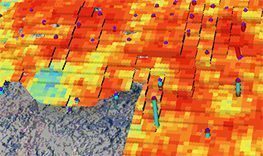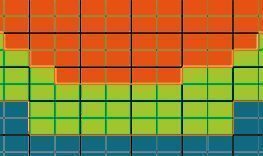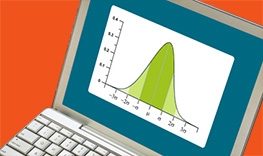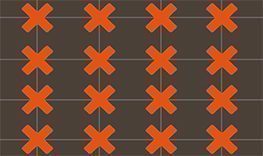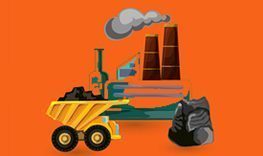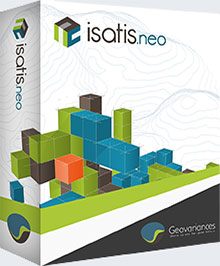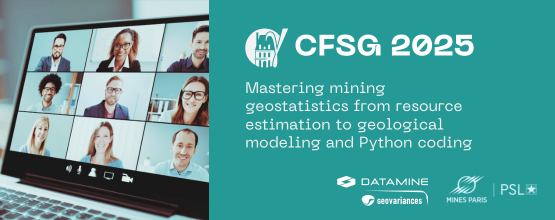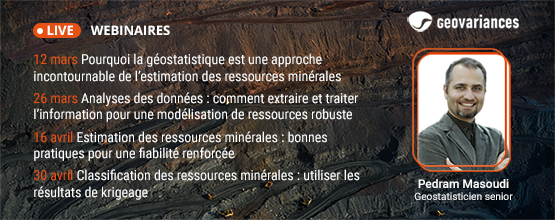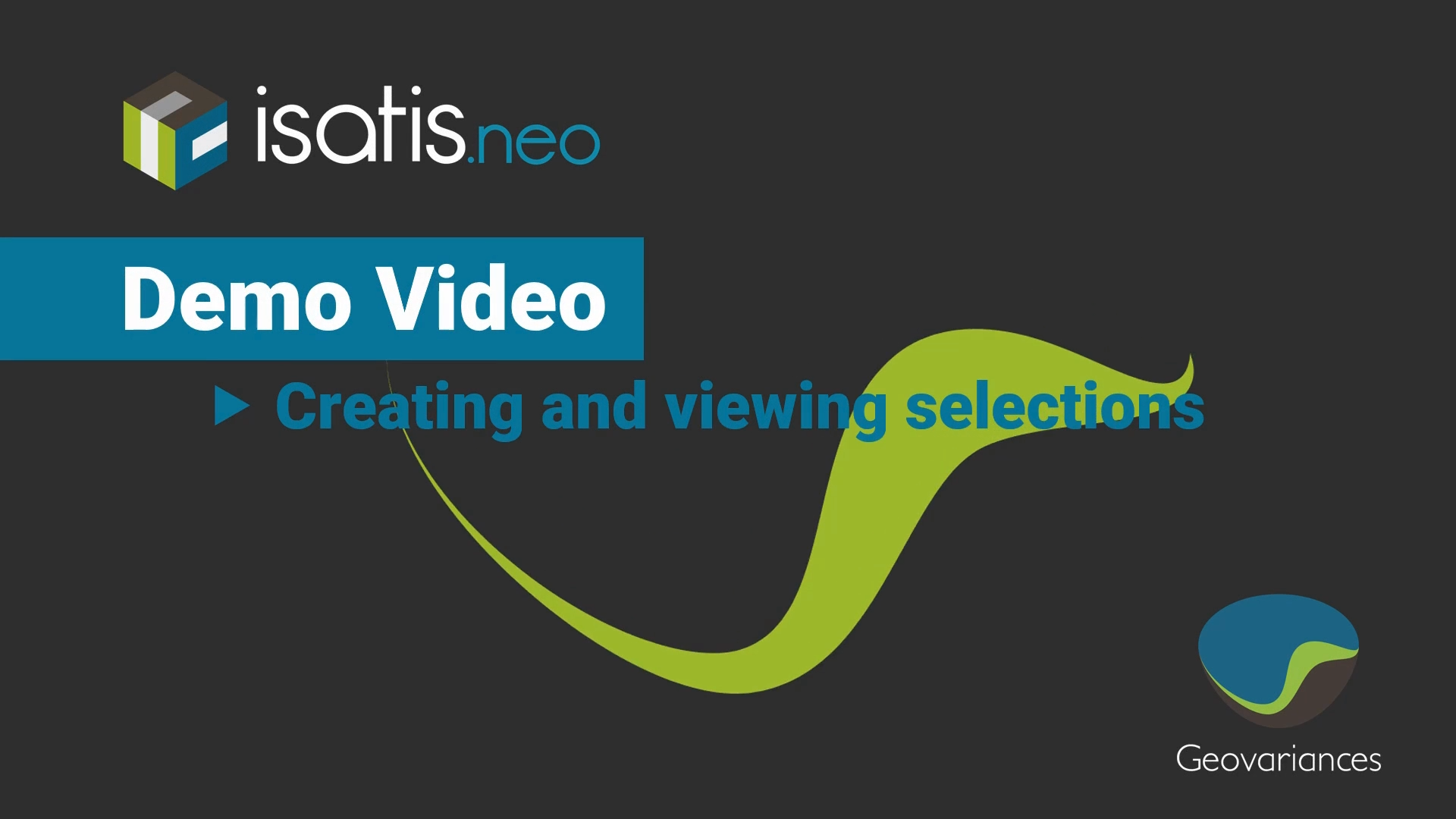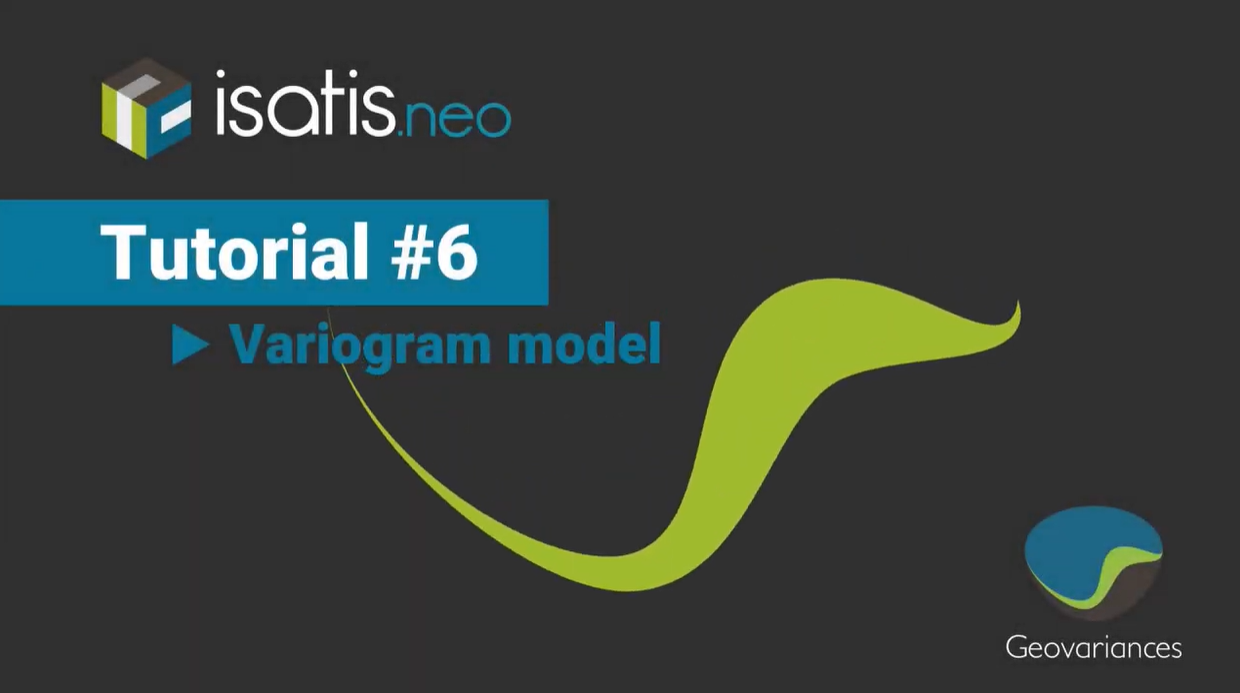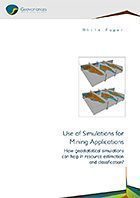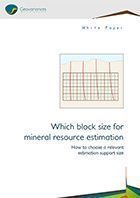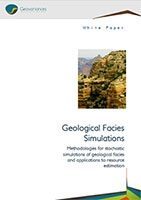Geostatistics for Mineral Resource Estimation
Geostatistics is the most efficient and powerful framework to characterise, estimate and manage your mineral resource.
Geologists or mining engineers can apply geostatistics at all stages of the mine life cycle: from exploration to development, production and even for site remediation. Geostatistics offers a wide range of methodologies adapted to all commodities and styles of deposits.
Geovariances’ scientific rigour, continuous innovation and geostatistical expertise guarantee the quality of your evaluations at different stages of the development of your projects (feasibility studies, bankable studies, desktop reviews, etc.).
Optimize mineral resource management
Using our solutions, you can...
HEAR FROM OUR CUSTOMERS
WHAT IS HAPPENING IN YOUR INDUSTRY?
Resources
-
Isatis.py, geostatistical Python library by Geovariances | Geovariances Python package for geostatistics
-
Isatis.neo Mining Edition
-
Mining geostatistics training catalog for Europe and Africa
-
Software licensing system & operating system requirements | Geovariances - Software licensing system & operating system requirements
-
Consulting services for the mining industry
-
Amélioration de l’estimation des teneurs en alumine d’un gisement de kaolin à l’aide des simulations par bandes tournantes | XVe Journées de géostatistique 2021 - V. Bouchet (Imerys), M.C. Febvey (Geovariances), Hélène Binet (Geovariances), Armand Dubus (Geovariances)
-
Co-kriging of log ratios: a worked alternative method | Clint Ward, Cliffs, Ute Mueller ECU
-
Local Uncertainty Benchmarking – A coal case study | Written by C. Mawdesley, D. Barry, O. Bertoli and R. Saha
-
Sensitivity study of the estimation variance approximation of a quotient | Comparison with Conditional Simulations in the Mn Deposit of Bangombé (Gabon)
-
Data classification using geostatistical hierarchical clustering for robust and dynamic domaining
-
Coherent modeling of mineral grades and zones by coupling cokriging and Support Vector Machine | Authors: P. Masoudi, J. Langanay , R. Rolo - Presented at MMME’25 (www.international-aset.com)
-
Using multiple-point geostatistics for geomodeling of a vein-type gold deposit | A. Zhexenbayeva, N. Madani, (School of Mining and Geosciences, Nazarbayev University, Astana, Kazakhstan), P. Renard, J. Straubhaar (Stochastic Hydrogeology Group, University of Neuchatel, Neuchatel, Switzerland) - Applied Computing and Geosciences 23 (2024)
-
Plurigaussian conditional simulation (PGS) of the Budenovskoe uranium roll-front deposit, central Kazakhstan: 3D model of the host sedimentary sequence | M. Abzalov, D. Renard - Applied Earth Science. 2023;132(3-4):227-235
-
Uncertainty analyses for short-term planning and quality control applied to Capitão do Mato e Galinheiro mines – MG | Giulia Marina Cerqueira Dias, Dissertação de Mestrado, Instituto de Geociências, Recursos Minerais e Meio Ambiente, São Paulo, 2023
-
A novel geostatistical index of uncertainty for short-term mining plan | G. M. C. Dias, M. M. Rocha & V. M. Silva (2023) - CIM Journal, DOI: 10.1080/19236026.2022.2145077
